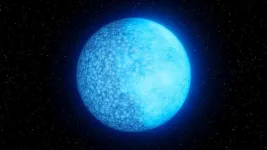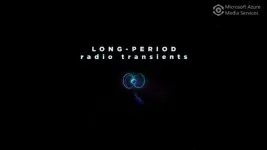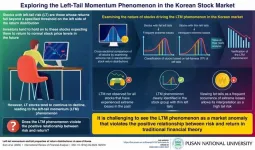(Press-News.org) The incidences of teen suicidality including self-harm, suicidal ideation, and suicide attempts increased nationally between 2016 and 2021; were at seasonal high peaks in April and October; and were at their lowest when schools were shut down during the COVID-19 pandemic, according to research at UTHealth Houston.
The study was published this month in JAMA Network Open. It was authored by Youngran Kim, PhD, assistant professor in the Department of Management, Policy, and Community Health at UTHealth Houston School of Public Health; Scott D. Lane, PhD, professor and vice chair for research in the Louis A. Faillace, MD, Department of Psychiatry and Behavioral Sciences with McGovern Medical School at UTHealth Houston; and Trudy Millard Krause, DrPH, professor in the Department of Management, Policy, and Community Health at the School of Public Health and co-director at the Center for Health Care Data.
“There is a clear pattern of suicidality related to the academic calendar. When that pattern was disrupted during COVID-19 and a change in the school calendar occurred, it clearly affected suicidal behavior,” Kim said.
“We were initially motivated to determine if there was an increasing trend in youth self-harm and suicide ideation or attempt over the past five years, and we did in fact confirm a year-over-year increase — except 2020,” said Lane, who is also director of research for the UTHealth Houston Behavioral Sciences Campus. “In 2020, we were provided with a rare natural experiment, in which the entire school system was shut down across the country. It was an opportunity to examine seasonality corresponding to the school calendar. It just happened that the school closure occurred during months in which suicidality normally peaks. In fact, we observed a decline in the spring when schools were closed, where we otherwise would predict an increase.”
In the cross-sectional study, researchers looked at 73,123 emergency department visits and hospitalizations that occurred among more than a million youth and adolescents each year for suicidality between 2016 and 2021. The national database is administrated by Krause.
Among these events, nearly 66% were females with the average age of 15. From 2016 to 2019, there was an increase in incidence from 760 per 100,000 to 1,006 per 100,000. During the COVID-19 pandemic, there was a temporary decrease to 942 per 100,000 and then a jump to 1,160 per 100,000 in 2021.
“There was a linear trend where the increase was consistent from 2016 to 2019, and then a drop in 2020. However, the rebound in 2021 did not resume along that trend line, it actually overshot it,” Lane said. “We found a post-COVID increase in suicidality beyond what would be expected, and it was particularly salient in females.”
During pre-COVID-19 years and 2021, seasonal patterns showed peaks in April and October with a dramatic low in the summer months. consistent with the school calendar. However, for the spring of 2020, during the time when schools were shut down, April and May had the lowest rates.
Given the findings, researchers suggest interventions during the peak months of April and October, especially for adolescent females, could help in protect against seasonal increases in suicidality.
“If I were a provider or a public health official interested in suicidality, I might emphasize programs that recognize the increased risk in adolescent females post-COVID,” Lane said. “Or at least have specialized interventions that are aware of the uniqueness of female suicidality in youth.”
A limitation of the study is that the data only looked at the suicidality in youth with health insurance. who presented to an emergency department or were directly hospitalized. The data did not include those who were uninsured or had federal or state-supported health insurance. Also, while suicidality is among the best predictors of completed suicide, the study did not measure completed suicides because those records do not go to the insurance database used in the report.
Media Inquiries: 713-500-3030
END
UTHealth Houston study on seasonality of teen suicidality in JAMA Network Open
2023-07-19
ELSE PRESS RELEASES FROM THIS DATE:
NASA funds 3 citizen science projects to study 2024 U.S. solar eclipse
2023-07-19
NASA has awarded funding for three science teams to conduct citizen science investigations as a total solar eclipse sweeps across North America on April 8, 2024. In these experiments, volunteers will help study the Sun and its ethereal outer atmosphere, called the corona, which is revealed when the Moon completely covers the Sun’s bright disk.
“During next year’s total eclipse, hundreds of volunteers will capture images of the Sun and its corona to help answer real science question about our star and how it affects us,” said program scientist and eclipse lead at NASA Headquarters, ...
Association between markers of structural racism and mass shooting events in major US cities
2023-07-19
About The Study: This study found that major U.S. cities with higher populations of Black individuals are more likely to be affected by mass shooting events, suggesting that structural racism may have a role in their incidence. Public health initiatives aiming to prevent mass shooting events should target factors associated with structural racism to address gun violence.
Authors: Michael Ghio, M.D., of Tulane University in New Orleans, is the corresponding author.
To access the embargoed study: Visit our For The Media website at this link https://media.jamanetwork.com/
(doi:10.1001/jamasurg.2023.2846)
Editor’s ...
Trends, seasonality of emergency department visits, hospitalizations for suicidality among children and adolescents
2023-07-19
About The Study: The findings of this study of 73,000 emergency department visits and hospitalizations for suicidality indicated the presence of seasonal patterns and an observed unexpected decrease in suicidality among children and adolescents after COVID-19–related school closures in March 2020, which suggest a potential association between suicidality and the school calendar.
Authors: Scott D. Lane, Ph.D., of the University of Texas Health Science Center at Houston, is the corresponding author.
To access the embargoed study: Visit ...
Two-faced star exposed
2023-07-19
In a first for white dwarfs, the burnt-out cores of dead stars, astronomers have discovered that at least one member of this cosmic family is two faced. One side of the white dwarf is composed of hydrogen, while the other is made up of helium.
“The surface of the white dwarf completely changes from one side to the other,” says Ilaria Caiazzo, a postdoctoral scholar at Caltech who leads a new study on the findings in the journal Nature. “When I show the observations to people, they are blown away.”
White dwarfs are the scalding remains of stars that were once like our sun. As the ...
Researchers put a new twist on graphite
2023-07-19
FROM: James Urton
University of Washington
206-543-2580
jurton@uw.edu
(Note: researcher contact information at the end)
Embargoed by Nature
For public release at 11 a.m. Eastern Time (8 a.m. Pacific Time; 4 p.m. British Summer Time) on Wednesday, July 19, 2023
Researchers put a new twist on graphite
For decades, scientists have been probing the potential of two-dimensional materials to transform our world. 2D materials are only a single layer of atoms thick. Within them, subatomic particles like electrons can only move in two dimensions. This simple restriction can trigger unusual electron behavior, ...
Understanding the many different ways animals are evolving in response to fire could help conservation efforts
2023-07-19
In our modern era of larger, more destructive, and longer-lasting fires—called the Pyrocene—plants and animals are evolving quickly to survive. By synthesizing the wide body of research about rapid animal evolution in response to fire in a review publishing in Trends in Ecology & Evolution on July 19, a multidisciplinary team of ecology experts hopes to leverage what we already know to help foster evolution-informed conservation plans. In this way, they suggest, we can try to harness the ways in which fire impacts animals to protect vulnerable species—working with evolution instead of against it.
In response to climate change and changes in land use, ...
Astronomers find new type of stellar object
2023-07-19
An international team led by astronomers from the Curtin University node of the International Centre for Radio Astronomy Research (ICRAR) has discovered a new type of stellar object that challenges our understanding of the physics of neutron stars.
The object could be an ultra-long period magnetar, a rare type of star with extremely strong magnetic fields that can produce powerful bursts of energy.
Until recently, all known magnetars released energy at intervals ranging from a few seconds to a few minutes. The newly discovered object emits radio waves every 22 minutes, making it the longest period magnetar ever detected.
The research was published ...
PNU researcher investigates left-tail momentum in the Korean stock market
2023-07-19
Left-tail risk (LT) stocks are those whose returns fall into the extreme end on the left side of the return distribution. In the hopes of mean-reverting to the normal price, investors usually hold on to these stocks. However, contrary to mean-reverting expectations, these stocks that have experienced extreme losses and high tail risks in the past tend to continue declining in the future, resulting in financial losses. This phenomenon, referred to as left-tail momentum (LTM), appears to challenge the traditional notion of a positive relationship between risk and return.
To investigate this market anomaly, a team of researchers, led by Prof. Eom from the School of Business at Pusan National ...
The puzzle of the galaxy with no dark matter
2023-07-19
A team of scientists, led by the researcher at the IAC and the University of La Laguna (ULL) Sebastién Comerón, has found that the galaxy NGC 1277 does not contain dark matter.This is the first time that a massive galaxy (it has a mass several times that of the Milky Way) does not show evidence for this invisible component of the universe. “This result does not fit in with the currently accepted cosmological models, which include dark matter” explains Comerón.
In the current standard model cosmology massive galaxies contain substantial quantities of dark matter, a type of matter which does not interact in the same ...
New catalysts for solar hydrogen production
2023-07-19
Finding sustainable and clean fuels is crucial in today’s global energy and climate crisis. One promising candidate that is increasingly gaining relevance is hydrogen. However, today’s industrial hydrogen production still has a considerable CO2 footprint, especially considering processes like steam reforming or non-sustainable electrolysis.
A team led by Prof. Dominik Eder from the Institute of Materials Chemistry (TU Wien) is therefore focusing on the development of environmentally friendly processes for obtaining hydrogen, for example by photocatalysis. This process enables the conversion of ...






